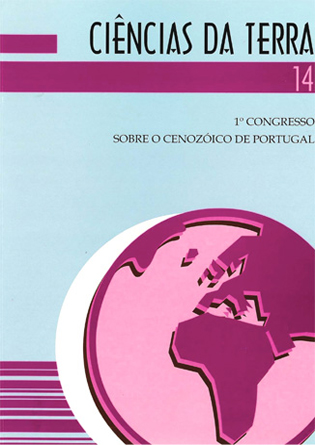Mineralogia da fracção argilosa da Formação de Vale Álvaro (Bragança, NE Portugal)
Abstract
Key-words: smectite; montmorillonite; paligorkite; chlorite; chlorite-smectite mixed-layers; serpentine; carbonates; mafic and ultramafic rocks; Bragança. The studied materiaIs were sampled from several conglomerate and carbonate sandstone units, overlapped for 23 meters. This formation represents a debris flow dominated alluvial fan, altemating with quiet sedimentary conditions. These deposits of probably Paleogene age were placed upon mafic and ulltramafic rocks that are the exclusive source of sediments. Optical and SEM identification, microanalysis and XRD studies (with decomposition procedures) of clay fractions obtained after high-speed centrifugation were performed in order to characterise the clay minerals content. The results of the analytical program allowed the establishment of the following remarks: a) Fe-rich montmorillonite dominance over paligorskite, chlorite, chlorite-smectite mixed-layers, serpentine and talc; b) smectites in the 12.4 - 15 A range, expanding to about 17 A afler EG treatment; c) serpentine and talc as secondary minerals in the interior of altered clasts; d) chlorite and chlorite-smectite mixed-layer compositions in lhe borders of the clasts and in the cement. The composition of sediments results from coarse cJasts eroded from mafic and ultramafic rocks and cJayey material. Clasts show evidences of post-depositional weathering (coatings of chlorite and smectitc). Clayey material has the contributions of: i) inherited chlorite, smectite and chlorite-smectite mixed-layers; ii) authigenic crystallisation off e-montmorillonite (due to availability of Fe) in the crystallising solutions following previous weathering events); iii) authigenic paligorskite associated to a carbonate cement.Downloads
Issue
Section
Articles






